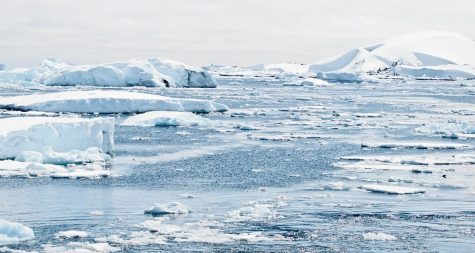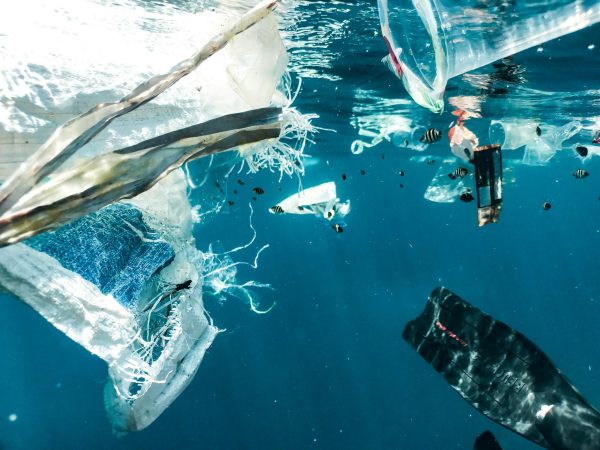Global Warming Demystified
When most people think of global warming, their minds go to factories.
Taken from: Pixabay (Pixabay Licence)
Author: cwizner
The issue of global warming is undoubtedly one of the most highly discussed topics in the media today. Despite the message that this is a critical issue being perpetuated time and time again, climate change activists such as Greta Thunberg and Alexandria Villaseñor continue to polarize audiences. Even more interestingly, however, is that this relatively clear separation between those who do and do not support such advocates persists to their views on the entire issue. A 2019 study by the Yale Program on Climate Change Communication as well as the George Mason University Center for Climate Change found that while Liberal Democrats voted that global warming was the 3rd most important matter to tackle in the 2020 elections, Conservative Republicans considered it the 29th most important topic (out of 29!). Incredibly, this proved to be a more politically polarizing problem than abortion and even gun control.
Clearly, this is a topic of heated debate. Being in a school of internationally-minded problem-solvers, I am confident that some of the students here today will play a significant role in tackling climate change in the next decade. However, one thing that I noticed as a general trend was that many, while having good intentions, could not quite answer the question “How does global warming actually work?”. The common answers might include blanket phrases such as “pollution” or “fossil fuels”, but this does not paint the full picture. I thus want to try my best to concisely explain what global warming is, and debunk some myths along the way.
First, let’s understand how the Earth heats up in the first place. As sunlight reaches Earth’s atmosphere, the ozone layer acts as a sort of ‘filter’, letting through some of the sunlight within certain wavelengths, and absorbing others. Most critically, it ensures that most ultraviolet radiation does not reach us. Without this effect, it would be challenging for any living beings to survive on Earth. Due to reflective, or ‘shiny’, objects such as clouds and ice, approximately 30% of overall sunlight that reaches the planet is reflected right back. This number is known as the ‘albedo’ of Earth. The rest is then absorbed by the land, oceans, and atmosphere. This contributes to the large bulk of our planet’s heating, but importantly – it is not enough for us to live comfortably at all.

Taken from: Pixabay (Pixabay Licence)
Author: girlart39
What many might not know is that the Earth has always had the greenhouse effect. Even more surprising might be that the greenhouse effect is incredibly essential to human life being comfortable; without it, the average surface temperature would be at an approximately -18˚C (33˚C colder than the current average). So, how does it work? After the sunlight is absorbed by the planet, the rocks, air and seas radiate thermal energy (in other words heat). This energy is then absorbed by water vapor and greenhouse gases (such as carbon dioxide and methane), and redistributed in all directions – including back down towards the surface. This acts as a cycle, raising the temperature of Earth further. This debunks the idea that the greenhouse effect is inherently a ‘harmful’ process.
However, the problem arises when considering man-made emissions. In recent years, the concentration of greenhouse gases in the atmosphere has risen exponentially, largely due to the usage of fossil fuels in industrial processes and deforestation (as fewer trees mean less carbon dioxide being removed from the atmosphere). This means that more thermal energy is sent back down to the surface, increasing temperatures beyond what is necessary. This is known as the enhanced greenhouse effect, and this is what is the real problem.
One argument against the existence of global warming is that the sun is simply following its solar cycle, and is approaching the period where it is naturally hotter. While these solar cycles do exist, it does not explain the temperature spikes in the last 150 years. The effects of solar cycles happen slowly over an extremely long period of time (approximately every 100,000 years), and thus cannot explain the comparatively sudden increase. Other examples of invalid arguments include using a day of cold weather as a reliable source of denying climate change, or that the ‘small’ amount of carbon dioxide in the atmosphere cannot have such a major effect on temperature.
However, I have also seen sensationalistic articles from the other side as well. One of the most commonly used ‘facts’ is that at the current rate, global warming will ruin Earth by 2030. This statement is often taken out of context from this exact quote in the 2018 Special Report by the United Nations Intergovernmental Panel on Climate Change: “The report finds that limiting global warming to 1.5°C would require ‘rapid and far-reaching’ transitions in land, energy, industry, buildings, transport, and cities. Global net human-caused emissions of carbon dioxide (CO2) would need to fall by about 45 percent from 2010 levels by 2030, reaching ‘net zero’ around 2050.”
Despite flaws in the arguments from both sides of the issue, it is still undoubtedly true that climate change is a major problem that society will have to face eventually. Earth might not be in rubbles by 2030, but we should act quickly. Besides, there are only 10 years left until that date, and we all know how quickly time can go by.










Ritsuki Harada • Dec 16, 2020 at
Where does Global warming occurning?